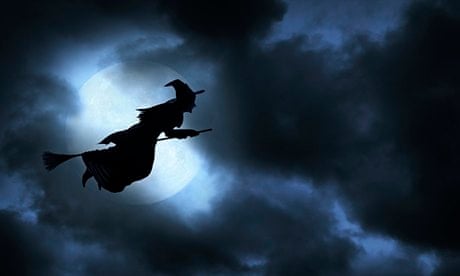Anthropology Notes – On – Attributes Of The Witch – For W.B.C.S. Examination.
নৃবিদ্যা নোট – ডাইন এর বৈশিষ্ট্য – WBCS পরীক্ষা।
Witches in each region have their own unique traits, but there are twelve attributes that characterize the witch wherever it appears. In this discussion it should be understood that witch refers to the power which may or may not be material, and which may work in the human world or in a separate, mystical dimension.Continue Reading Anthropology Notes – On – Attributes Of The Witch – For W.B.C.S. Examination.
- Social subversion. Witches are angry and spiteful and dedicated to the overthrow of orderly human society.
- Nocturnal activity. Witches may operate in daytime, but they are most active at night.
- Transformation. The witchcraft power can transform itself into the form of any animal, or bird, or another human form, or into invisibility.
- Flight. The witch can fly, in the form of its bearer or an alter, and it can travel at great speed. The power can leave its human body behind as it goes off on its mission of mischief; or it can fly to another location in any form including the form of its bearer, so a person can be in two places at once.
- The familiar. The witch may have a spirit or animal pet or companion that can share the power, and that can accompany the witch or be sent by the witch on its own evil errand.
- The “Sabbat.” Witches of a community meet together periodically, for an orgy of forbidden behavior, and to develop new strategies for social subversion. Because Jews were the first group to be collectively demonized as witches in Europe, the Hebrew word came to be used for the witches’ gathering. The Sabbat is usually held at night at a known time and place, a wild dangerous place or a place of death, a cemetery or cremation site, a place people fear to go.
- Spread of disease. Witches are universally blamed for epidemics, especially fatal diseases of unknown etiology.
- Abduction of children. Witches everywhere are fond of little children, and seek to steal them (or their souls) away.
- Illicit sexual behavior. Witches engage in whatever sexual behavior is considered abnormal and wrong by the society (e.g., incest, pedophilia, homosexuality, bestiality, public nudity, or bizarre sexual stimulations and positions). The agenda of the Sabbat often includes a sexual orgy, among the witches and with their human victims.
- Ritual murder. At the Sabbat witches ritually kill their victims, usually with knives, and in very bloody fashion.
- Cannibalism and vampirism. Witches eat the flesh and drink the blood of their human victims, either during personal attacks upon them in their homes, or after sexually and otherwise tormenting them at the Sabbat.
- Association with death. Witches are always somehow associated with death, in at least four ways: they kill, they meet in a place of death, they use corpses for food or for their terrible potions, and a myth of the origin of witches may say that the original power was first given to people in a Faustian bargain by a god of mortality.
Some variations on these attributes are widespread in specific regions. Christian conceptions of witches in medieval Europe had all 12 attributes; foremost among several specific details was that they were agents of Satan. Also, medieval European witches most often flew on some sorts of mounts, either fantastic creatures, male goats, or broomsticks. In sub-Saharan Africa, the witchcraft power is often located in a specific substance in the body; a fatty or tumorlike growth that can be discerned through autopsy; or animal teeth or a ball of metal or hair, or even a live snake, any of which had been swallowed by the witch, or developed mystically within its body. Also in sub-Saharan Africa witches walk upside down, a reflection of the general belief that witches embody the opposite of human norms. As elsewhere, the genitals are the locus of dangerous power, and social nudity is bad; African witches appear naked at the Sabbath. And when they fly, African witches often emit jets of fire from their anuses and armpits.
Similarity between certain attributes of witches and shamans in Asia and the Americas have been noted: transformation, flight, and working with familiars. The fact that shamans can work sorcery is not notable, as this is a learned skill open to anyone. But the combination of sorcery and witchcraft practiced by some shamans is unique. In his classic 1963 article “The Sorcerer and His Magic” (originally published in French, 1949), Claude Lévi-Strauss described how shamans could use their powers for evil purposes, in what later came to be known as “dark shamanism.” A collection of writings on this theme was compiled in 2004 by Neil Whitehead and Robin Wright in their book, In Darkness and Secrecy: The Anthropology of Assault Sorcery and Witchcraft in Amazonia.
Our own publications are available at our webstore (click here).
For Guidance of WBCS (Exe.) Etc. Preliminary , Main Exam and Interview, Study Mat, Mock Test, Guided by WBCS Gr A Officers , Online and Classroom, Call 9674493673, or mail us at – mailus@wbcsmadeeasy.in
Visit our you tube channel WBCSMadeEasy™ You tube Channel
Please subscribe here to get all future updates on this post/page/category/website



 Toll Free 1800 572 9282
Toll Free 1800 572 9282  mailus@wbcsmadeeasy.in
mailus@wbcsmadeeasy.in


















































































































